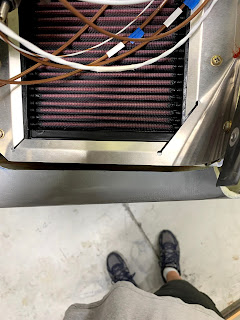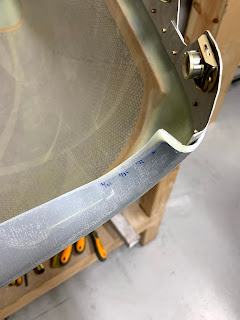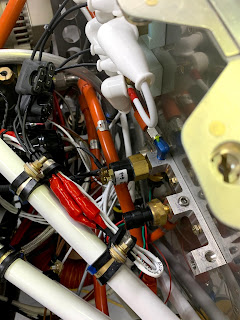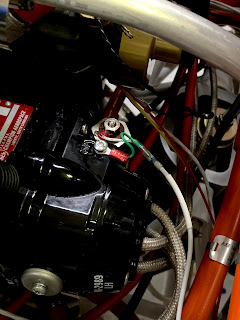A lot of miscellaneous tasks were accomplished during the past couple of weeks, the most noticeable of which was wiring the various FWF sensors to the avionics, as well as finishing the damned cowl baffle. They both are looking good though. Oh, and I had a visit from my buddy, Ken B., who gave me an initial Pope's blessing for the FWF - before we do the first engine run-ups, he'll go over everything with a fine-toothed comb. For now, most everything was good, and a couple things were fixed. Specifics for the past week are listed below:
- attached magneto/emag cooling tubes; sealed baffles with lots of red RTV
- formed and attached clamping strips to bottom cowl air inlets; epoxy-floxed between cowl and strips
- sanded bottom cowl outboard and inboard air inlets to curve to match the baffle’s width; added epoxy/flox to top cowl to eventually sand down to match bottom cowl (outboard edges of air inlets)
- sanded top and bottom cowl outboard inlets to match each other; attached inlet seals (except one screw - need a longer screw); attached foam block to top cowl with red RTV; mostly done with the cowl baffle section!
- installed prop bracket & cable; partially attached sniffle valve and tubes/hoses; ; finished installing alt. air cable
- Route, adel-clamp, and attach spark plug harnesses (from Slick magneto and P-mag)
- Ken B. visited to check out my FWF and avionics install to date - great to catch up, and I appreciated the advice!
- installed CHT and EGT probes; messed with routing wiring for EGT and CHT (K-type wires); inventoried misc. hardware and supplies that I bought from Ken. B.
- worked on wiring under panel; routed and wired CHT and EGT probes
- wired a couple FWF sensors (fuel pressure, oil pressure)
- wired master solenoid, starter solenoid, oil pressure switch, oil temp, main amp shunt (primary alternator), aux amp shunt (backup alternator), started tidying all wire bundles FWF
Using binder clips to pre-bend the stuff rubber seals:




























No comments:
Post a Comment